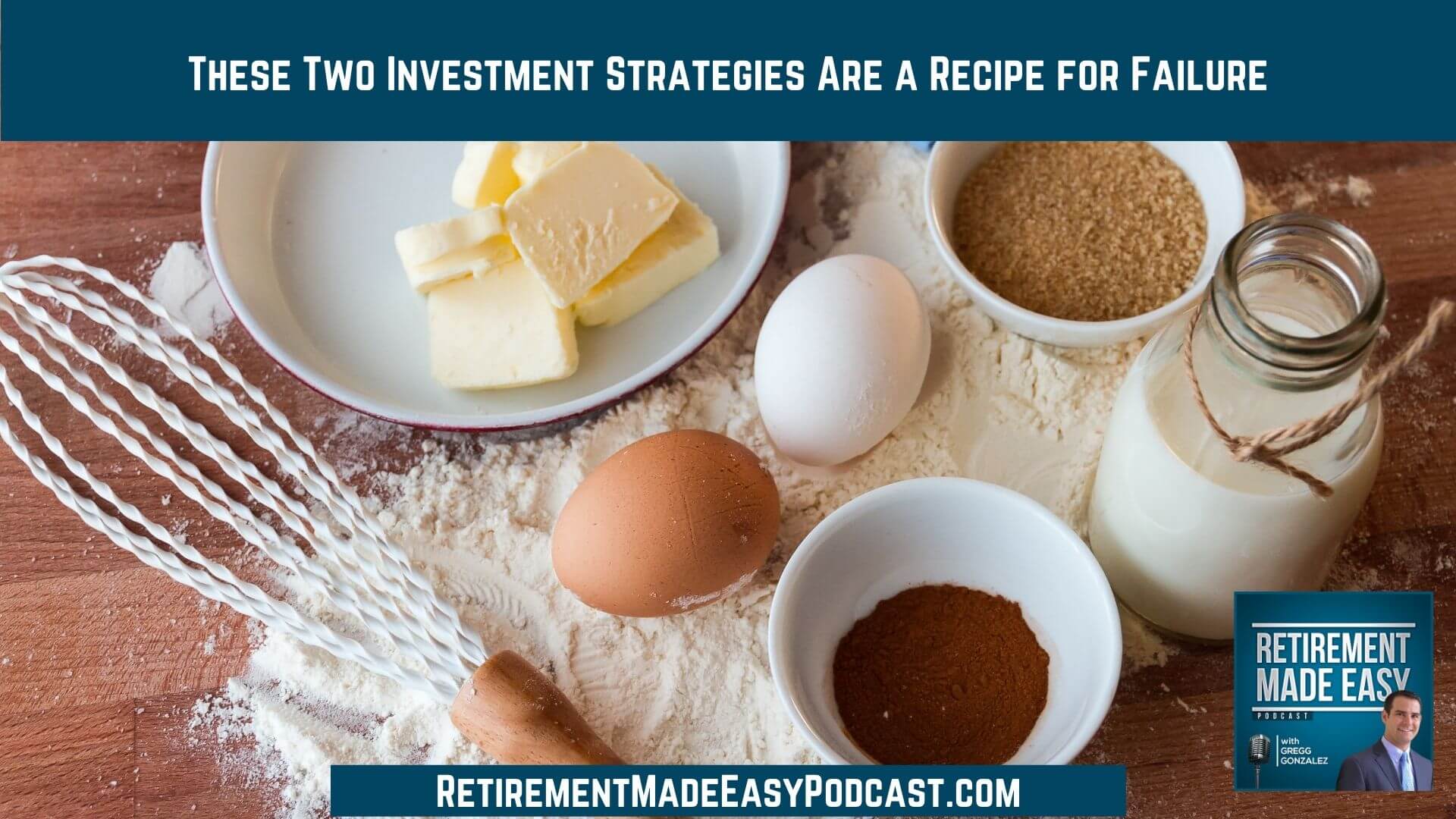
In this episode of the Retirement Made Easy podcast, I share two conversations I had with listeners. Both were given advice that I would consider a recipe for failure. One was given a strategy to time the market and the other was advised to chase short-term performance. Why are those two things dangerous? Listen to this episode to find out!
You will want to hear this episode if you are interested in…
- [3:10] Stop trying to time the stock market
- [10:46] Don’t chase short-term performance
COVID’s impact on the stock market in 2020
I had a nice conversation with a listener who followed another podcast that promised a strategy for timing the market that worked. They claimed they knew when to get out and when to get back in. It sounds like a rosy story but very few people have been able to do this successfully. Why is it so difficult to do? No one knows when the market is hitting the top or bottom. You’ll drive yourself mad trying to predict it.
At the start of 2020, the S&P 500 index—within 33 days—dropped 34%. People were panicking and sold out of the market. The market bottomed on 3/23/2021 and 59 days later the market recovered. No one could have predicted that it would recover that fast.
Stop trying to time the stock market
We don’t know when the market will correct, but it’s inevitable and natural for it to happen. So what do we do? We set up your portfolio to account for it. If you live in Louisiana, the hurricanes are disastrous. But if you live there, you know hurricanes happen and know that you need an emergency plan in place. People who live in tornado alley have tornado shelters to shield themselves.
Jumping out of the market to avoid the storm is not a wise decision. A well-positioned portfolio will help you accomplish your goals in retirement. An all-weather portfolio will get you through both the sunny and rainy days. You need to have patience and let time work for you and can adjust your sails as your course changes.
Don’t chase short-term performance
One of my listeners, Jill, and her husband have been saving with their 401ks and had a sizable 529 plan they had invested for their daughter. They’re certain they’ll be able to afford the nice retirement they’d always dreamed of. But they had a know-it-all sibling who urged them to embrace what I would label a poor strategy. He would look at the #1 mutual fund in the world for the previous year and put all of his money in it hoping it would repeat the next year. This is a recipe for failure. Why?
The #1 funds are typically sector funds and are very high-risk. They aren’t typically well-diversified and are often very concentrated—which is why they can see high returns in a single year. In 2020, there was a technology fund up well over 100%. The sibling told Jill and her husband to invest their daughter’s college education in this fund.
Don’t bet your retirement on red or black
I told Jill and her husband that I would not bet their daughter’s education. When you have a #1 mutual fund there’s a reason why it did well that year and it likely won’t happen again. There’s never a repeat winner.
You have to follow the rules of diversification and not put all your eggs in one basket. You can’t chase short-term performance. That fund may just have an average performance. People that chase performance end up with mediocre returns. It’s better to have a portfolio of well-diversified funds that don’t overlap that complement each other.
A gentleman bought his dream house on a golf course that backed up to the 8th hole. He came home one day to find that his large picture window was shattered by a golf ball. It was going to cost $2,000 to replace it. Two weeks later, the same thing happened. What did he do? He got a window with multiple frames so if a golfer hits the window he’d have to replace only a small pane of glass instead of the whole thing. That’s diversification.
Connect With Gregg Gonzalez
- Email at: Gregg@RetireSTL.com
- Podcast: https://RetirementMadeEasyPodcast.com
- Website: https://StLouisFinancialAdvisor.com
- Follow Gregg on LinkedIn
- Follow Gregg on Facebook
- Follow Gregg on YouTube



